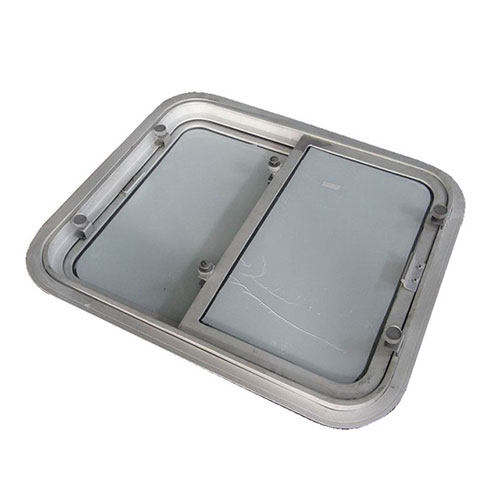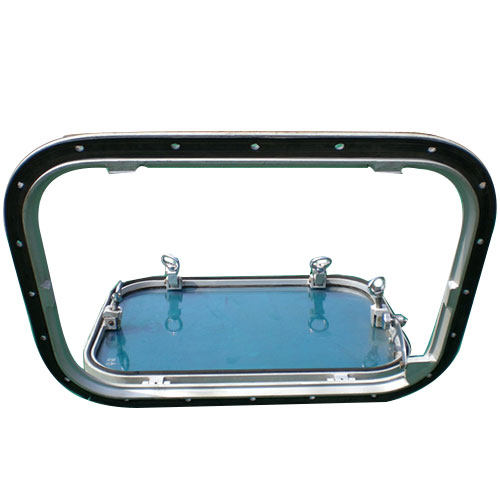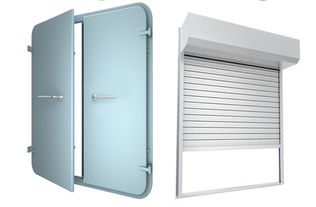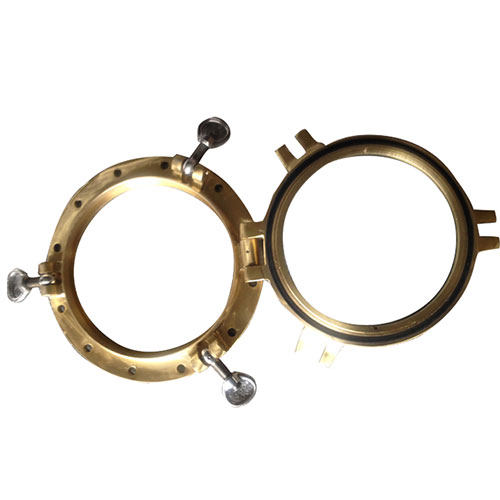What are Marine Windows: 4 Quick Tips to Know Comprehensively
Marine windows, often known as ship windows or portholes, are critical components of marine vessel design and functionality. These windows, being an important component of ship architecture, provide crucial functions such as natural illumination, vision, and ventilation. They confront special challenges, however, because they are exposed to extreme environmental conditions such as water pressure, saltwater corrosion, and impact from waves and debris. In this article, we will focus on the topic of what are marine windows, exploring the importance, design, materials and types of marine windows in maritime applications.

Importance of Marine Windows
On ships and vessels, marine windows perform various important tasks.
Natural Lighting
Natural light enters the interior spaces through marine windows, eliminating the need for artificial lighting during the day and creating a more comfortable environment for passengers and staff.
Visibility and Navigation
Clear marine windows give crew members a clear line of sight, which helps with navigation, situational awareness, and safety during maneuvers.
Ventilation
Hinged marine windows can be opened to offer ventilation, enhancing air circulation and passenger and crew comfort.
Emergency Access
In an emergency, marine windows can act as an alternate escape route, giving additional safety precautions for evacuations.
Aesthetics
Well-designed marine windows contribute to the vessel’s aesthetics and overall appearance, increasing its visual attractiveness.

Design Considerations for Marine Windows
Shape and Size
Marine windows come in a variety of shapes and sizes, depending on the type and purpose of the vessel. Portholes are circular windows that are common on smaller vessels and offer a typical nautical appearance. On larger ships and passenger vessels, rectangular and oval windows are more common. The size of the windows is governed by elements such as the structure and architecture of the vessel, as well as legal restrictions.
Materials
The materials used in marine windows are crucial in maintaining durability and safety. Tempered glass, laminated glass, acrylic (PMMA), and polycarbonate are all common materials. Tempered and laminated glass are extremely strong and safe, but acrylic and polycarbonate are lightweight and impact-resistant alternatives.
Framing
Marine windows are usually contained in frames composed of stainless steel, aluminum, or marine-grade brass. In the sea environment, the frames provide structural stability, watertightness, and corrosion protection.
Watertightness
Marine windows must be watertight to prevent water from entering the vessel through the window during severe seas. The sealing mechanisms of the windows and frames are critical in maintaining adequate water resistance.
Double Glazing
Many modern marine windows have double glazing, which consists of two layers of glass with an air gap between them, to improve insulation and prevent condensation. Double glazing helps to keep the interior temperature reasonable and decreases heat transfer.
Hinged or Fixed
Marine windows can be fixed or hinged. Hinged windows can be opened to provide ventilation, bringing in fresh air. Fixed windows, on the other hand, are typically employed in locations where ventilation is not a significant concern.

Materials Used in Marine Windows
It is vital to use the correct materials for marine windows to ensure durability, safety, and best performance. Marine windows are commonly made from the following materials:
Tempered Glass
Tempered glass is a common choice for marine windows because of its strength and safety characteristics. Tempered glass shatters into small, less dangerous fragments when shattered, minimizing the risk of harm.
Laminated Glass
Another popular alternative for boat windows is laminated glass. It is made up of two or more layers of glass with an interlayer substance (often PVB) placed between them. Laminated glass is stronger and safer because the interlayer retains the glass together even if it fractures.
Acrylic (Polymethyl Methacrylate – PMMA)
Acrylic is a lightweight, impact-resistant substitute for glass that is often used in marine windows. Although it has outstanding clarity and UV protection, it may necessitate more frequent maintenance owing to scratching and degradation over time.
Polycarbonate
Another lightweight and impact-resistant material appropriate for marine windows is polycarbonate. It has a high tensile strength and good clarity, making it perfect for rough sea conditions.
Common Types of Marine Windows
Portholes
Portholes are small. Side scuttle porthole windows that are popular on smaller ships, boats, and ancient ships. Portholes were traditionally used for ventilation and lighting in staterooms, but their original design is often kept on modern vessels for aesthetic reasons.
Fixed Windows
Fixed windows are non-operable and are securely sealed shut. They are prevalent in areas where ventilation is not a primary concern, such as bulkheads, observation lounges, and public areas.
Sliding Windows
Aluminum sliding windows feature panels that can slide horizontally or vertically within the frame, providing ventilation options while maintaining a secure seal when closed.

Hinged Windows
Hinged windows have panels that pivot on one side, allowing them to be opened outward for ventilation. These windows are commonly used in cabins, crew quarters, and areas where controlled airflow is desired.
Windows with Storm Shutters
Some marine windows come equipped with storm shutters or covers that can be secured during adverse weather conditions to provide additional protection against the elements.
Conclusion
Marine windows are important components of marine vessels because they provide crucial services such as natural illumination, visibility, ventilation, and safety. They are must be designed and constructed to endure the extreme conditions of the marine environment, including water pressure, saltwater corrosion, and impact. Modern marine windows, because to developments in materials and construction processes, provide enhanced durability, safety, and aesthetics, adding to the efficiency and comfort of maritime operations. As the maritime industry evolves, marine window design and technology will most certainly witness further advancements to fulfill the sector’s ever-increasing demands.

